Ultimate Guide to 17 Wine Bottle Sizes (Dimensions, Shapes)
Wondering what other bottle sizes are there besides the standard 750 ml bottle?
There are quite a few, ranging from the petite Split bottle to the majestic Midas bottle. Some of them are rare collectibles that are quite hard to find.
Let’s look at all the different wine bottle sizes, their how it affects wine aging, the different wine bottle shapes and colors, and how to choose awine rack based on the wine bottle dimensions.
Further reading
- Discover all about fine wine investment, including insider tips!
- Also find out how many glasses of wine are in a standard bottle.
The 17 Different Wine Bottle Sizes
Here’s a summary chart of all wine bottle sizes and the number of servings in a bottle:
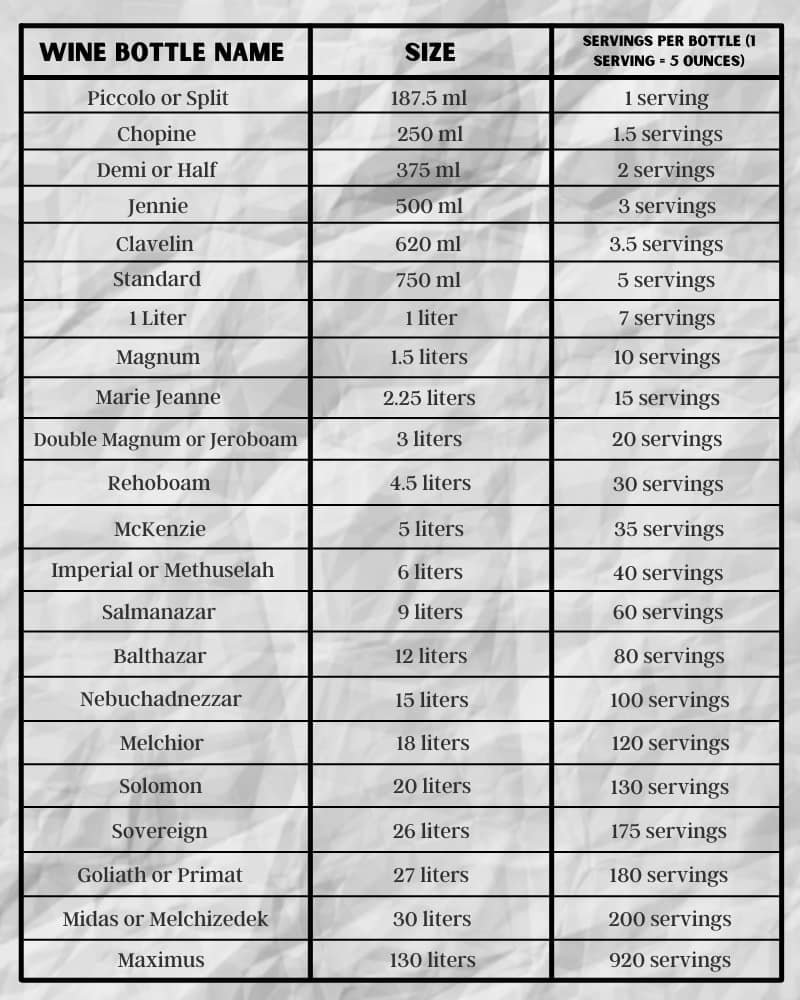
Let’s explore each of these bottle sizes starting from the smallest one:
1. Piccolo or Split
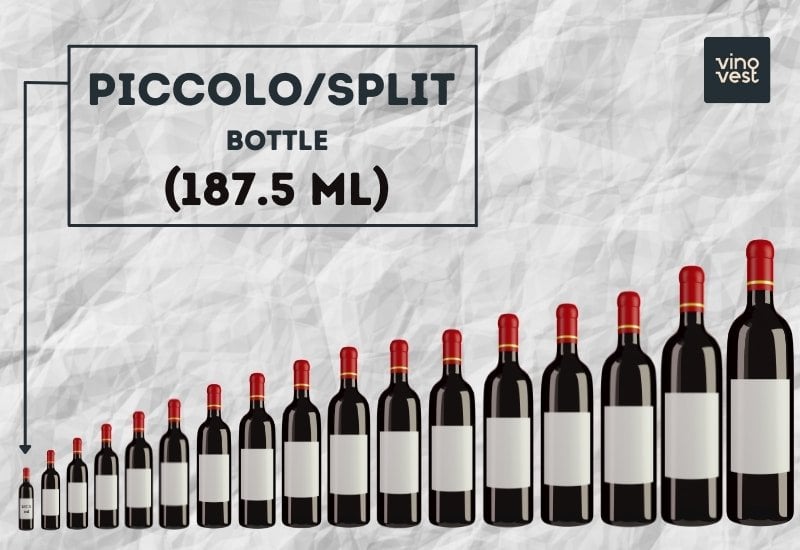
The Piccolo bottle is 187.5 ml (a quarter of the standard wine bottle.) This bottle contains a single serving and is ideal for sampling different wines.
The Piccolo bottle is most often used for Champagne and other sparkling wine styles. This quarter bottle is not ideal for aging regular wines since they might oxidize faster than in a standard size bottle.
2. Demi or Half

The 375 ml Demi bottles contain around two wine glass servings.
Many restaurants offer a variety of wines in half bottle size since they are ideal for sharing with your dinner companion.
3. Jennie
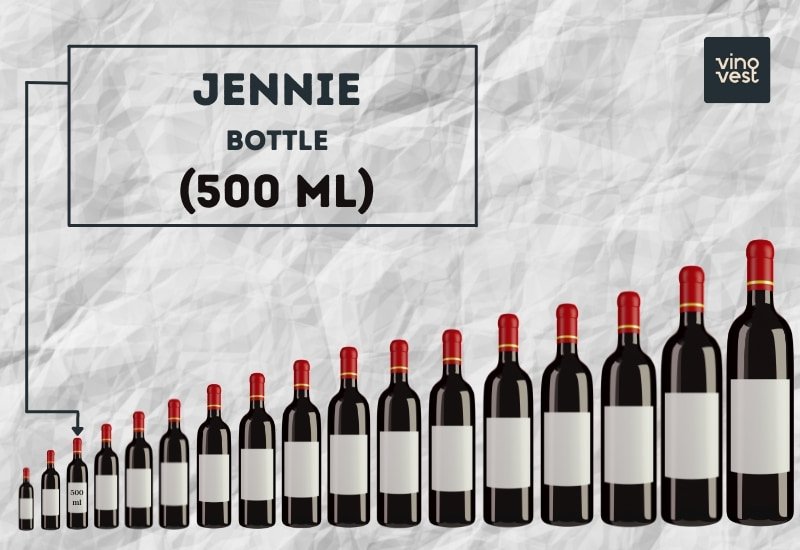
A Jennie bottle holds 500 ml of wine. This smaller bottle size is mainly used for Sauternes, Tokaji, and other sweet wine styles.
4. Standard
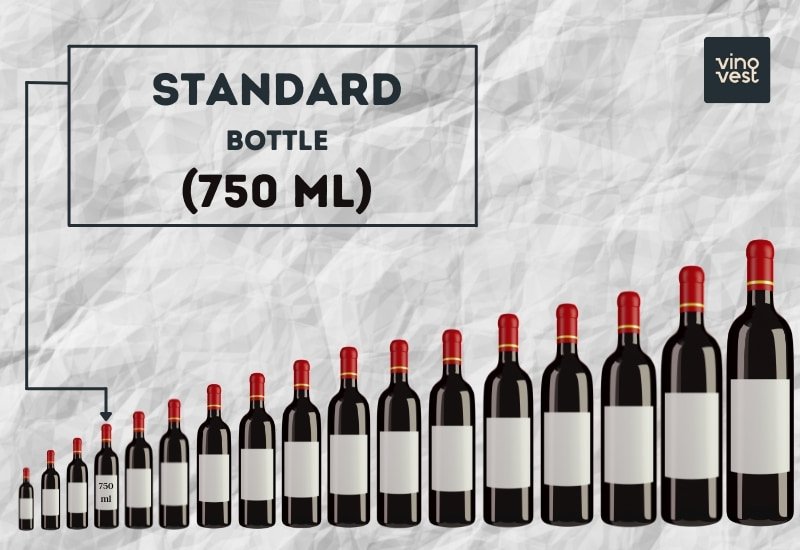
The standard bottle holds 750 ml which is about five servings of wine per bottle. This is a common bottle size for most distributed wine and is convenient for storing on a standard wine rack.
5. 1 Liter
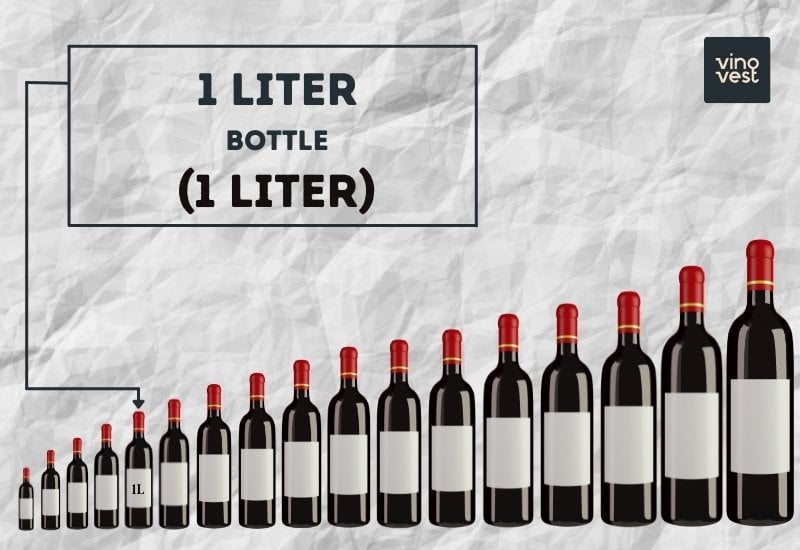
This bottle size is quite common for value wines from Europe and Australia. It holds about seven glasses of wine and is suitable for small gatherings.
6. Magnum
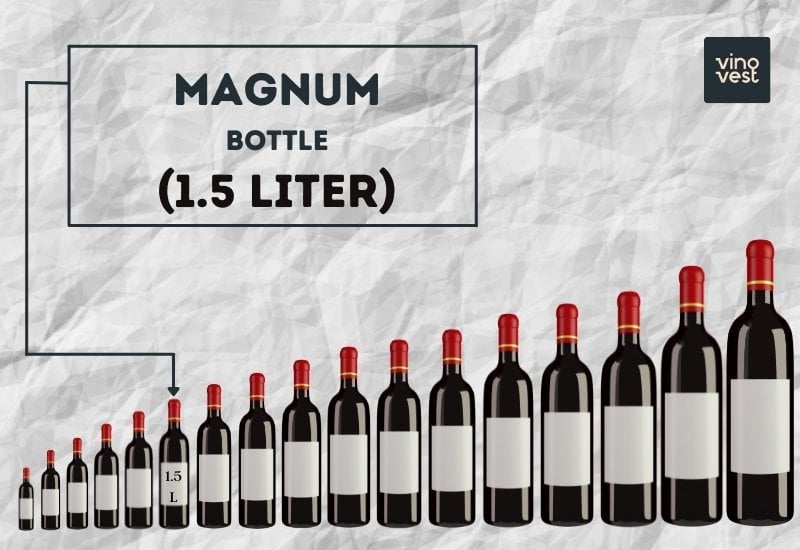
A magnum bottle is twice the standard wine bottle size (1.5 liters.) This bigger bottle looks quite fancy at gatherings and is not that hard to find. This bottle size is often used for age-worthy Burgundy, Bordeaux, and Champagne wines.
7. Double Magnum or Jeroboam
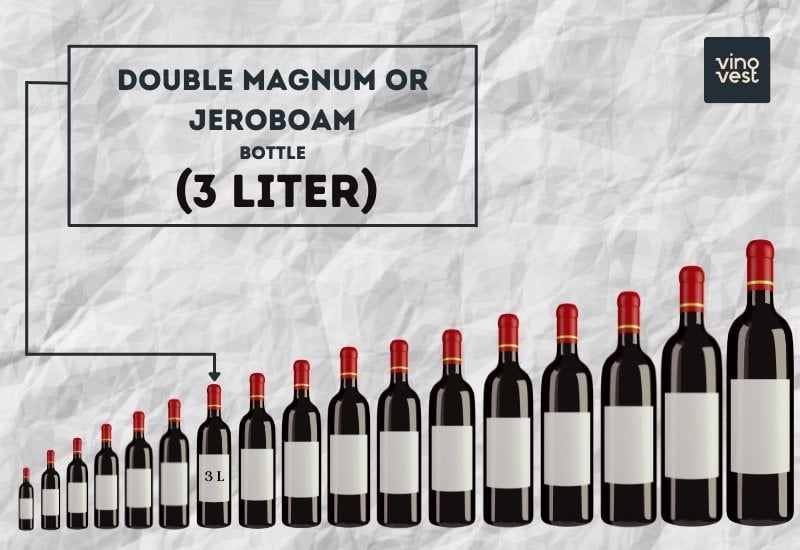
A double magnum can hold 3 liters and serves 20 glasses of wine. This bottle size is also known as Jeroboam (named after a Biblical King.)
Here it’s important to note that while the Jeroboam Champagne bottle size contains 3 liters, a still wine Jeroboam usually has 4.5 liters (or 30 servings.)
These large format wine bottles are hard to store and pour from in your wine glass. However, they look great at parties.
8. Rehoboam
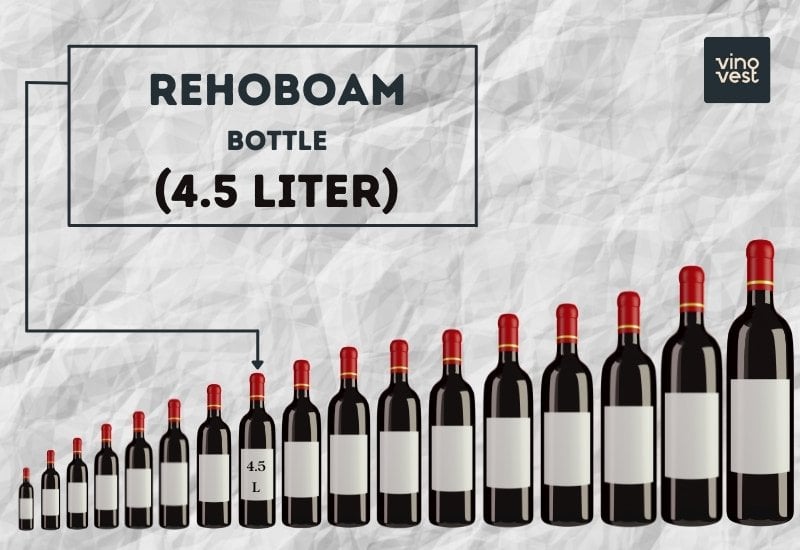
Rehoboam is a 4.5 L bottle used only for sparkling wine (same size as the non-sparkling Jeroboam bottle.) The bottle is named after another Biblical King (son of King Solomon.)
9. Imperial or Methuselah
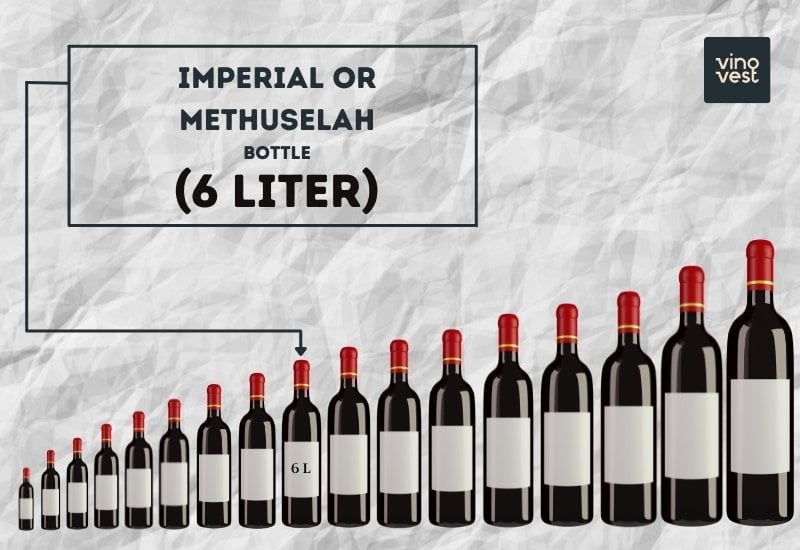
Imperial (or Methuselah) bottles hold 6 liters of wine (or two double magnum bottles.) They’re mainly used for Champagne and very few still wines from Bordeaux.
The name of these large-sized bottles comes from the imperial gallon metric. Some refer to it as Methuselah, which is the name of the oldest Biblical King.
10. Salmanazar

Named after an Assyrian King, this wine bottle holds 9 liters of wine (equivalent to a whole case of wine.) Containing about 60 servings, this large bottle can serve a party of 40-50 guests.
Salmanazar is most common for wines from Burgundy, Bordeaux, and Champagne.
11. Balthazar
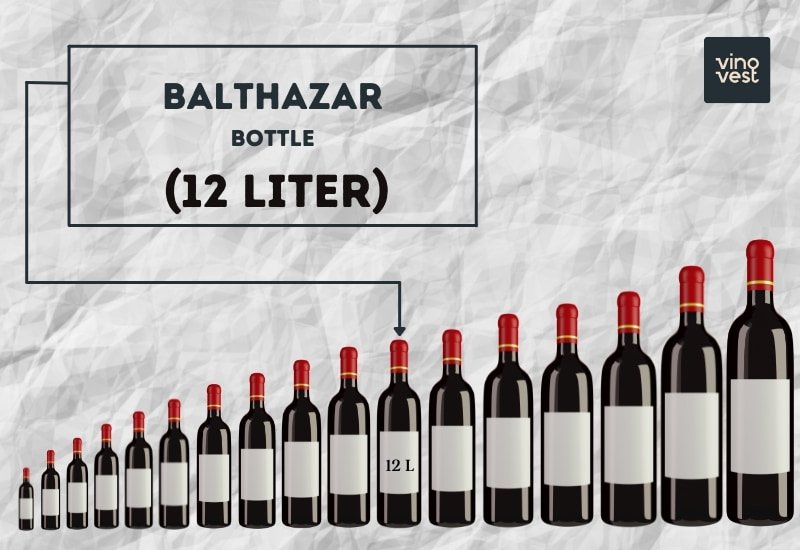
Balthazar wine bottles hold 12 liters of wine (the equivalent of two Imperial bottles.) Named after one of the Three Wise Men from the Bible, this bottle size is quite impressive and can bring festivity to any large party.
12. Nebuchadnezzar
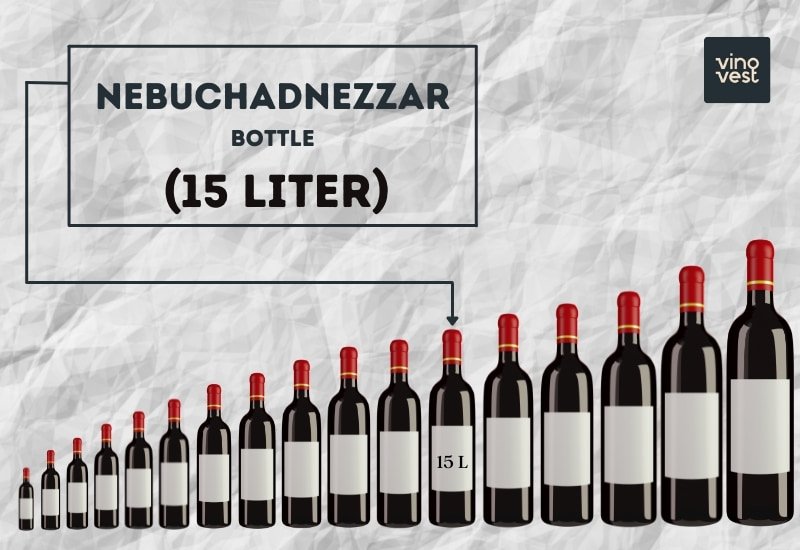
This bottle size is named after a Babylonian King and can hold 15 liters of wine (about 20 standard bottles.) You’ll most likely find a fine Bordeaux wine or a prestigious Champagne bottled in a Nebuchadnezzar.
13. Melchior

Melchior bottles hold 18 liters of wine (or two full cases of standard wine bottles.) This bottle is named after the oldest of the Wise Men from the Bible.
It is pretty big (around three feet tall and weight of over 40 kilograms), so pouring from it is quite a challenge. However, it is a true gem in any wine collection and makes the perfect gift to any wine lover.
14. Solomon

Solomon contains 20 liters of wine or about 130 servings. This wine bottle has the name of a Biblical King, and it is mostly used for bottling Champagne.
15. Sovereign

This wine bottle size was invented in 1988 by Taittinger in honor of the cruise ship Sovereign.
This large wine bottle holds an astonishing 26 liters of wine (or 175 servings.)
16. Goliath or Primat
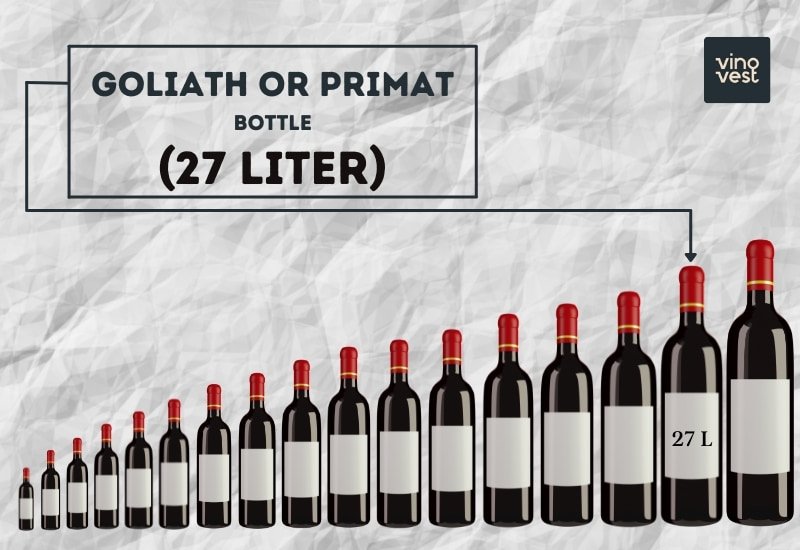
This giant wine bottle holds 27 liters of wine (about 3 cases of standard wine bottles.) The wine bottle is named after the warrior Goliath who was defeated by the Biblical King David.
17. Midas or Melchizedek
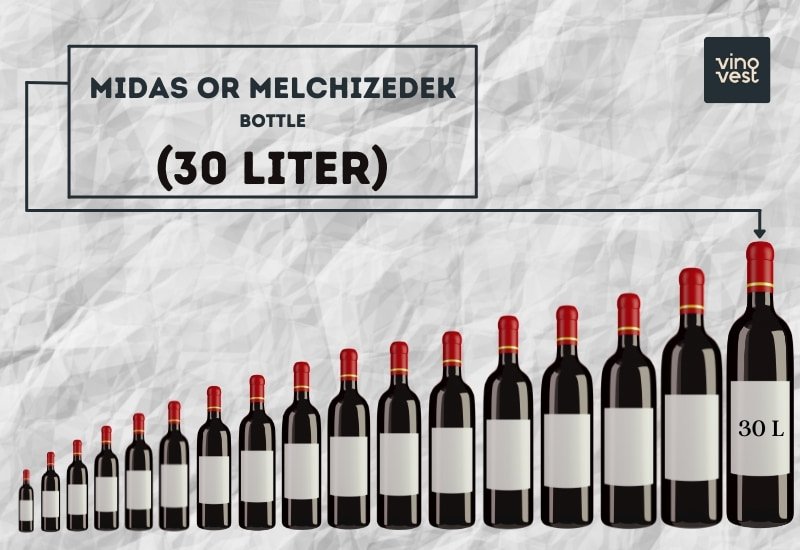
This is the largest format of wine bottle you can find and is used only for Champagne wines.
This bottle size is quite rare. It holds about 30 liters (200 glasses of wine.) Both Midas or Melchizedek are names of Biblical Kings.
Other Unique Bottle Sizes
Here are some other less popular wine bottle sizes that you probably didn’t even know exist:
1. Chopine
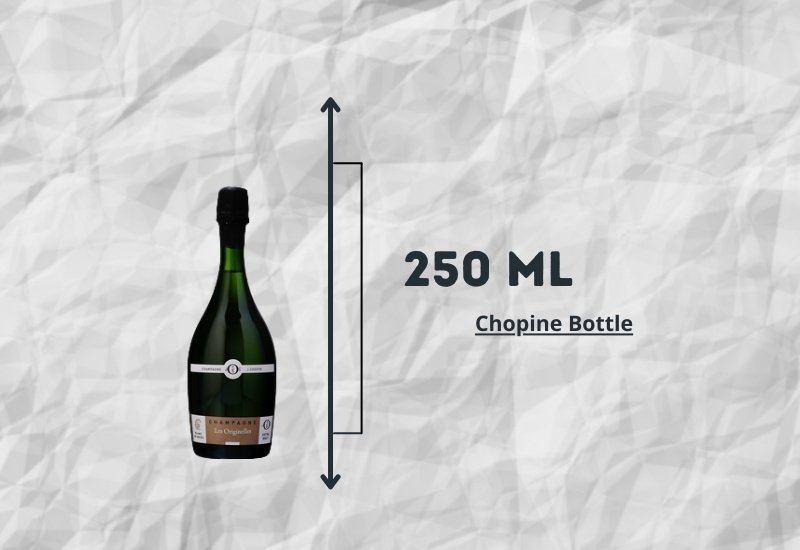
These smaller bottles hold 250 ml (one-third of a standard sized bottle) and are mostly used for Bordeaux wine.
2. Clavelin
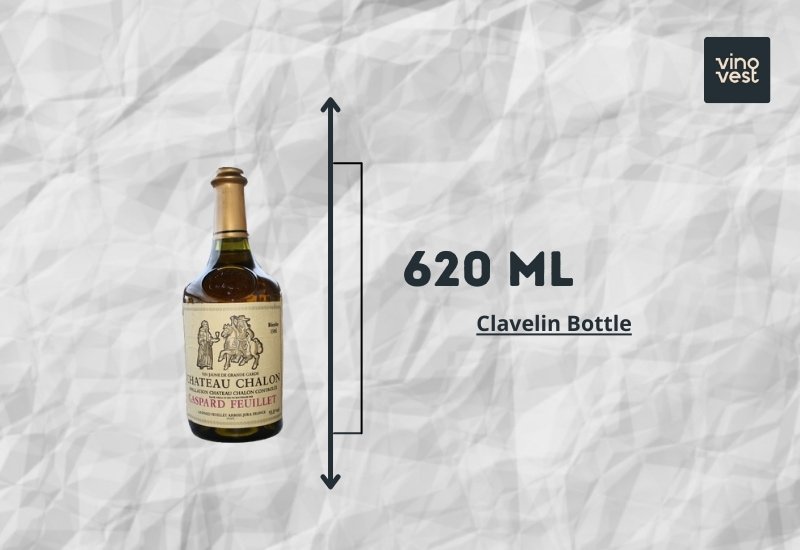
This bottle size holds 620 ml (80% of the standard bottle size) and is used primarily for the Vin Jaune wine of the Jura region in Eastern France.
3. Marie Jeanne
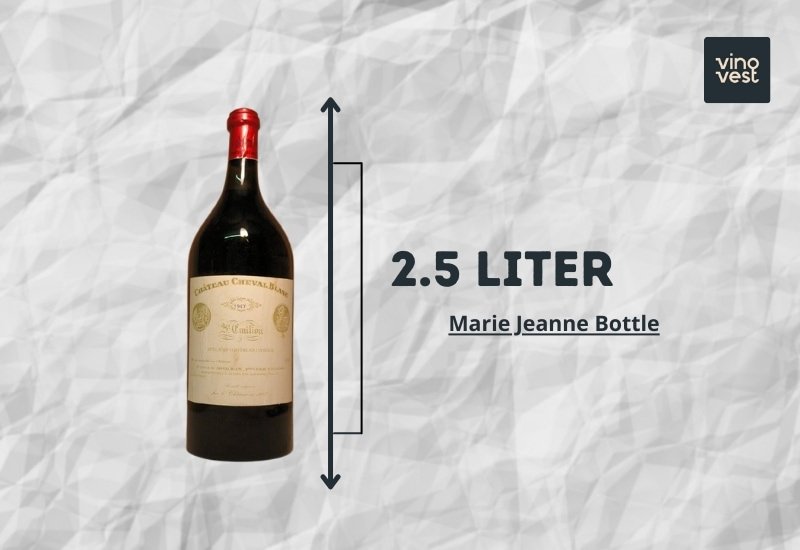
Holding about 2.25 liters of wine, this size is exactly three times the size of a standard wine bottle. It is mostly used for Port and Bordeaux wine.
4. McKenzie
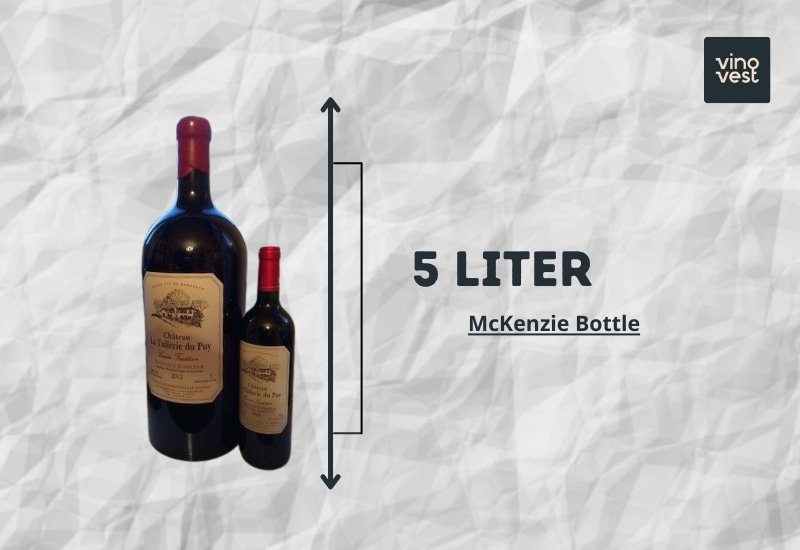
This unusual bottle holds 5 liters of wine and is rarely found outside of France. It is usually used for Bordeaux wine.
5. Maximus
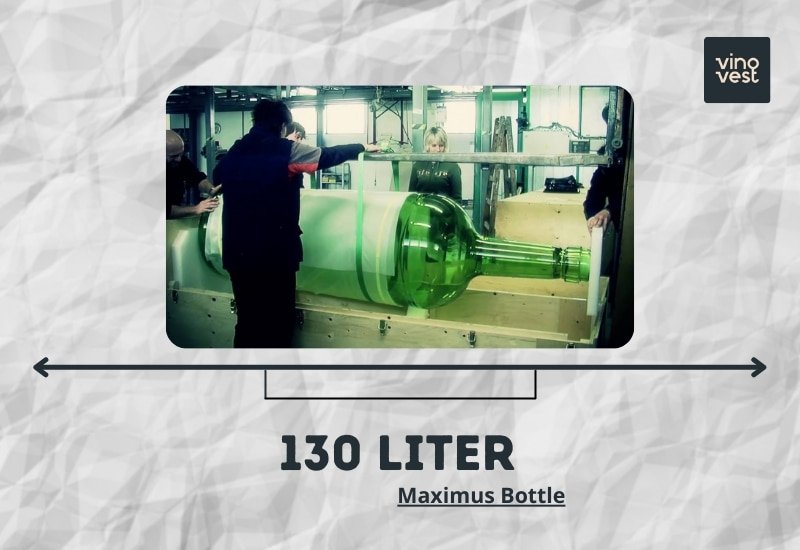
Maximus is the biggest wine bottle ever made. This large format bottle held the astonishing 130 liters of wine which is 184 standard bottles of wine or 920 servings!
The wine bottle is a Beringer Private Reserve Cabernet Sauvignon 2001. It is 1.38 meters tall, and only the bottle weighs 58 kilograms. This one-of-a-kind bottle was sold for a whopping $55,812 at a Sotheby’s auction in New York in 2004.
How do the different bottle sizes affect the wine aging potential?
Aging Potential Depending on the Bottle Size
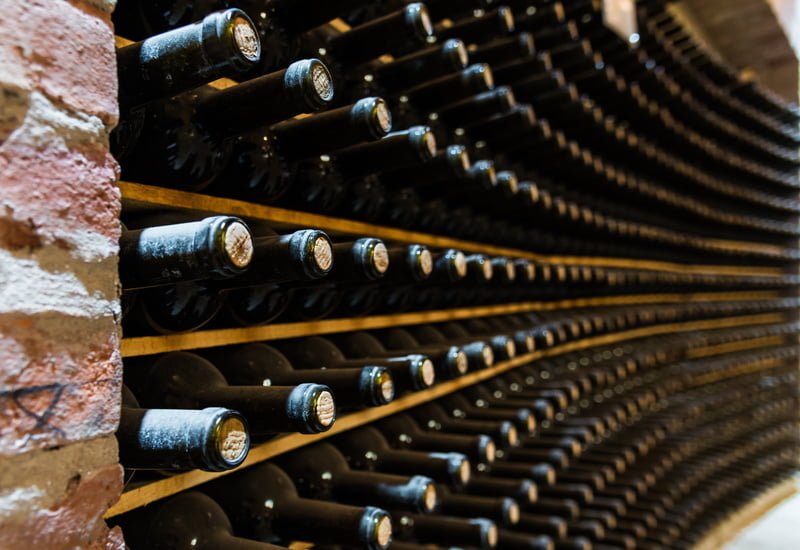
Smaller format bottles have shorter aging potential.
But why is that?
The oxygen trapped under the cork is about the same, no matter how big the bottle is.
So, a small bottle will expose a much smaller amount of wine to the same amount of oxygen as a larger bottle. This sealed oxygen is trapped in the space between the wine and the cork (called ullage.)
That’s why big bottles can preserve the wine for much longer, slowing down the oxidation process since the ullage is spread over a much larger amount of wine.
Standard Wine Bottle Shapes and Colors
Depending on the wine producer and wine region, the wine bottles might have different shapes as well.
Here are some of the most common ones:
1. Bordeaux
This bottle shape has high slanted shoulders that help retain the sediment of red wine.
The Bordeaux bottle also has a different color based on the type of wine:
- A red wine Bordeaux bottle is dark green in color.
- A white wine Bordeaux bottle has a light green color.
- A Bordeaux bottle used for sweet wines is usually transparent.
2. Burgundy
This wine bottle shape is tall and elegant with sloping shoulders. It is mainly used for Rhone blends, Pinot Noir, and Chardonnay. These bottles are usually dark green in color.
3. Alsace
Alsace bottles are tall and slick. They’re used for bottling dry white or dessert wine styles like Gewurztraminer and Riesling.
4. Other Bottle Shapes
- Champagne: The Champagne bottle is designed to be quite heavy. This prevents it from breaking under the pressure of the bubbly inside. These bottles vary in color from dark to mild green and transparent (for rose Champagne.)
- Port: These bottles have a Bordeaux-like shape with a bulb-shaped neck that retains all sediments.
- Chianti: The traditional Chianti bottle is round with a bulging bottom covered with a basket.
Some wine bottles also have punts. These are the dimples on the bottom of the bottle, which provide a better grip, bottle strength, and sediment retaining.
Now, wine bottle dimensions play a significant role when choosing your wine storage.
Here’s how to choose a suitable wine rack based on the wine bottle dimensions:
Wine Rack Options Based on the Bottle Dimensions
Understanding the different bottle sizes and their dimensions will allow you to plan better your wine storage space and style. You could design wine racks, wine fridge or wine cooler installations, or large wine cellar units accordingly.
Even if you decide to stick to standard size bottles, these might have slightly different dimensions (between 11.5-12.5 inches in height and 3-3.5 inches in width.)
Here are the bottle dimensions of all wine bottles that can fit into a wine rack:

The bigger wine bottles would be too huge to fit in a wine rack or a standard wine fridge.
If you plan on building your own wine collection, you might need to invest in a wine cooler or a bigger wine cellar depending on the size of your collection. You’ll also have to keep expanding it as your collection grows.
However, with a wine investment company like Vinovest, you can easily buy, store, and sell your wine bottles easily! Your bottles would be safely stored in optimal conditions without you having to bother with building expensive wine storage on your own.
Experiment With Different Wine Bottle Sizes in Your Collection
Now that you know all the various bottle sizes available, you can start looking for some of the rarest bottles for your portfolio.

The easiest way to build a fine wine portfolio would be through Vinovest. So head to the Vinovest website and explore your options right away!



